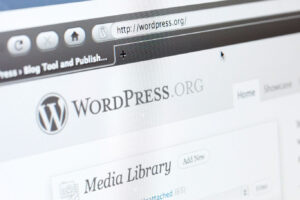When it comes to making a lasting first impression, nothing speaks louder than your logo. Whether you’re launching a startup in Oxford, rebranding in Bicester, or updating your visuals in Witney, learning how to design a logo that truly represents your business is essential. A logo is far more than just a pretty icon; it’s the face of your brand, a powerful identifier that communicates your values, voice, and vision. In this blog, we’ll walk you through the five key steps to create a logo that not only looks professional but captures the essence of your Oxfordshire business.
1. Understand Your Brand Identity
Before you sketch your first idea or explore fonts, take time to define who you are as a brand.
Ask the right questions:
- What does your business do, and what makes it unique?
- Who is your target audience?
- What emotions should your brand evoke?
Local Context Matters:
If you’re based in Oxfordshire, consider reflecting local culture, heritage, or values in your logo—think architecture, countryside, or community spirit.
Key Takeaway:
The clearer your brand identity, the stronger and more relevant your logo will be.
2. Research Your Industry and Competitors
A smart way to design a logo that stands out is to understand what others in your space are doing—especially in your local area.
Start by:
- Studying the logos of competitors in Oxford, Banbury, and beyond.
- Identifying trends in your sector (tech, retail, hospitality).
- Spotting overused design elements to avoid.
Digi Toolbox Insight:
We help clients design a logo that reflects industry expectations while injecting a creative twist that sets them apart.
3. Choose the Right Logo Style and Elements
There are several types of logos to consider. Your brand strategy will determine which is best suited.
Common Styles:
- Wordmark (e.g., Google): Uses business name with custom typography.
- Lettermark (e.g., BBC): Initials turned into a strong visual.
- Iconic/Symbolic (e.g., Apple): Ideal for modern, minimal branding.
- Combination Mark (e.g., Adidas): Versatile, blending text and imagery.
Elements to Consider:
- Colours: Blue = trust, green = eco, red = energy.
- Typography: Serif fonts = tradition, sans-serif = modern.
- Imagery: Think local, relevant, and scalable.
Key Takeaway:
Design a logo that communicates your message clearly at a glance.
4. Sketch, Conceptualise, and Design Digitally
Now that you know your identity and preferred style, it’s time to bring your logo to life.
Step-by-Step:
- Sketch ideas on paper before going digital.
- Use design tools like Adobe Illustrator, Figma, or Canva (for basic concepts).
- Keep it simple. A strong logo should be recognisable even in black and white.
Don’t Forget:
Your logo must work across:
- Business cards and brochures
- Social media profiles
- Website headers and favicons
- Signage and promotional items
Digi Toolbox Solution:
Our expert designers work closely with clients to design a logo that aligns with their unique vision and ensures consistency across all platforms.
5. Test and Refine Your Logo Design
Once your initial logo is created, it’s crucial to test its effectiveness before committing.
Tips for Testing:
- Get feedback from colleagues, customers, and local community members.
- Test it in different sizes and formats.
- Use mock-ups to see how it performs in real-world applications.
Logo Approval Checklist:
- Is it clear and legible at small sizes?
- Does it stand out against various backgrounds?
- Is it relevant to your business and audience?
- Will it still look good in 5 years?
Key Tip: Never rush this stage—refining could make the difference between a good logo and a great one.
If you would like to find out more, please get in touch with us to discuss your requirements or book a meeting with a specialist at a time that works for you.
📞 Phone: 01489 297070
📧 Email: [email protected]
FAQ & Additional Advice
Can I design a logo myself?
Yes, especially with tools like Canva or LogoMakr—but for businesses wanting long-term brand value, working with professionals like Digi Toolbox is a sound investment.
How long does it take to design a logo?
Depending on complexity, it typically takes 1–3 weeks including feedback and revisions.
Should I trademark my logo?
If your logo will be a core asset in your business, registering it can protect against copycats and give you exclusive rights.




